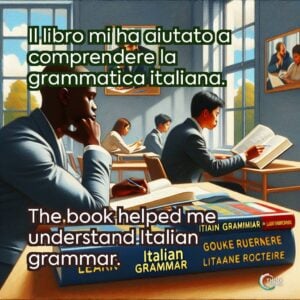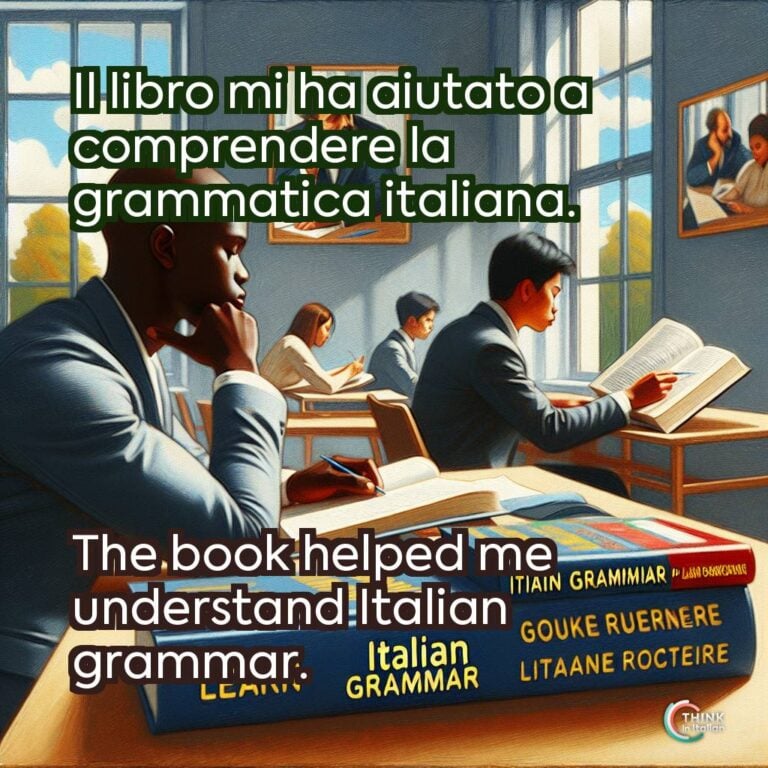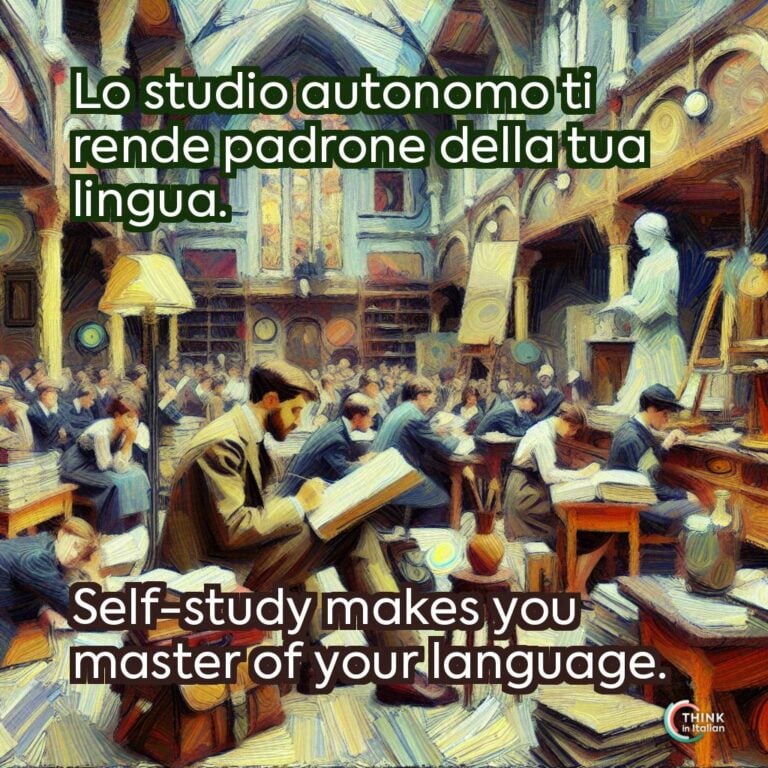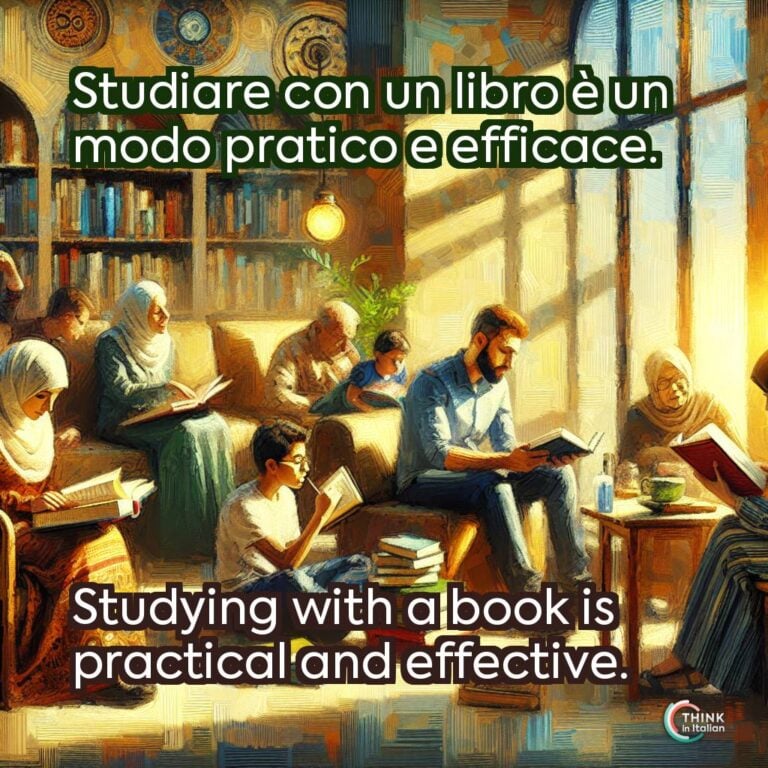Why Choose Self-Study for Italian?
Learning Italian on your own might sound like a challenge, but it’s completely achievable with the right resources. Regardless of your level, self-study books are invaluable companions.
Self-study gives you the flexibility to set your own pace and focus on areas that matter most to you. With these resources, you can learn at your own pace, build solid foundations, and gain the confidence to communicate effectively in Italian.
Here I will provide you with a comprehensive guide to the best self-study books for Italian learners from A1 to B2, along with practical strategies to get the most out of them.
Best Italian Textbook for Self-Study
A1-A2: Building Foundations
Start your journey with these beginner-friendly resources designed to simplify grammar, vocabulary, and essential conversational skills.
- “Italiano Progressivo” by Claudia Cerulli: a great starting point, this book introduces grammar and vocabulary in a systematic, easy-to-follow way.
- “Italian Grammar Drills” by Paola Nanni-Tate: practical exercises help you grasp grammatical structures like prepositions and verb conjugations.
- “Practice Makes Perfect: Basic Italian” by Alessandra Visconti: focuses on essential vocabulary and grammar through real-life contexts.
- “Living Language Italian Complete Edition”: combines grammar explanations, exercises, and audio materials for a comprehensive learning experience.
- “Italiano in Rete” by Edilingua: covers levels A1 to A2 with a focus on interactive and engaging exercises.
B1-B2: Advancing to Fluency
As you progress to intermediate levels, the focus shifts to refining grammar, building vocabulary, and practicing more complex sentence structures.
- “Nuovo Espresso 3 & 4” by Alma Edizioni: widely used in Italian schools, these books provide practical themes, listening exercises, and activities for intermediate learners.
- “Grammatica pratica della lingua italiana” by Susanna Nocchi: offers clear explanations and exercises to fine-tune your grammar skills.
- “Barron’s 501 Italian Verbs”: a must-have for mastering verb conjugations across all Italian verb tenses.
- “Short Stories in Italian for Intermediate Learners” by Olly Richards: engaging bilingual stories that expand vocabulary and comprehension.
- “Italiano Essenziale” by Isabella Rizzo: a comprehensive resource for consolidating B2-level knowledge with advanced grammar and vocabulary.
How to Choose the Right Approach
Bilingual Learning vs Monolingual Learning
Great for beginners, this method uses your native language to clarify grammar and vocabulary. It’s especially useful for understanding challenging concepts by drawing comparisons.
Intermediate learners can immerse themselves entirely in Italian with monolingual books, speeding up their journey to fluency by helping them think directly in the language.
Use the Books Effectively
- Create a Study Schedule: what I find useful is to dedicate specific days to specific levels, for example:
- Mondays: grammar
- Wednesdays: vocabulary
- Fridays: listening
- Combine Resources: pair books with other tools like apps or other platforms.
- Practice Daily: even 15 minutes a day makes a big difference. Shadow audio materials or write sentences based on textbook examples.
- Immerse Yourself in Italian Culture: you might start cooking Italian recipes, listen to Italian music, or watching Italian films.
Start Your Italian Journey
Learning Italian through self-study is not only effective but also rewarding. With the right books, strategies, and consistent practice, you can achieve fluency and immerse yourself in the world of Italian language and culture.
Each of these books offers a systematic approach to language learning. They combine grammar explanations, practical exercises, and cultural insights to create a comprehensive learning experience.
Together, they provide the structure and repetition needed to progress from basic phrases to confident conversations. So, what are you waiting for? Grab a book, set your schedule, and start your Italian adventure today. Buona fortuna!






